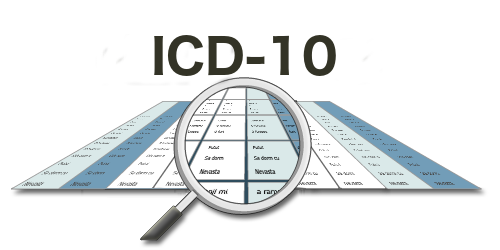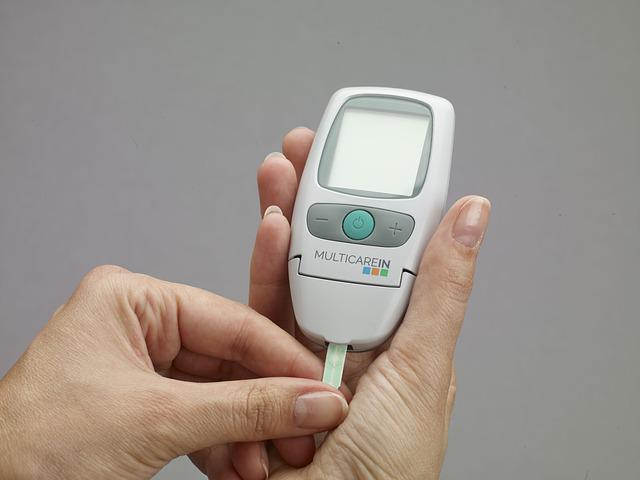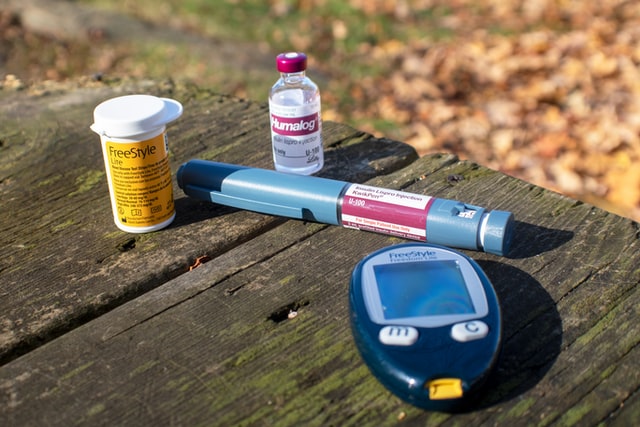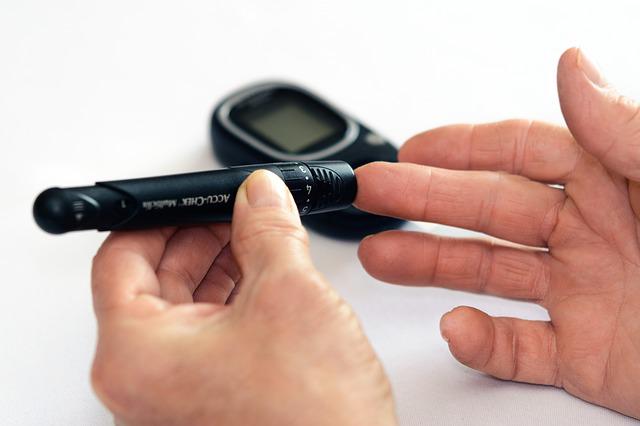
ICD stands for the International Code of Disease which is a diagnostic tool used worldwide for epidemiology, clinical, and health management purposes. That means it is the international standard used for reporting diseases and health situations in countries. It was designed originally to ease the classification of diseases by providing a method of codes for health care systems.
Thus, ICD provides codes for classifying signs, symptoms, complaints, external causes of disease or injury, and social circumstances for countries. Insurance companies are said to use the information provided by ICD to process financial claims (1).
ICD is maintained and published by the world health organization (WHO), with the system designed to promote international equivalence in the collection, processing, classification, and presentation of disease statistics. These statistics include morbidity and mortality, systems of reimbursements, and automated decision support in the various health care systems.
Morbidity refers to the state of suffering from a disease, the amount of the disease in a population, or the medical problems that arise due to the treatment of a disease (1, 2).
The ICD is revised regularly, and the current version in operation is version 11, known as ICD-11, which was accepted by WHO in May 2019 but only became effective in January 2022. Its worldwide adoption is growing gradually, with the United States still using ICD – 10 and some others still using versions 9 and 8 (3).
ICD-10

ICD-10 was adopted in the United States in October of 2015. It consists of over 70,000 codes that one can choose from. They contain both letters and numerals, though the code always starts with a letter, and contains 3-7 characters.
This length of characters enables the expression of more details about the disease like laterality, which specifies which side of the body the disease occurs on (right, left, or bilateral). Other information expressed in the characters of the code includes the body part affected, the device used, the approach used and other vital qualifiers (3).
There are two types of ICD-10 code systems: ICD-10-CM (Clinical Modification) and ICD-10-PCS (Procedure Coding System). ICD-10 CM is used for diagnosis whereas ICD-10-PCS is used for inpatient hospital procedures (4).
Benefits of using the ICD-10 (5)

- Improved clinical documentation. ICD-10 provides information to health providers that are both accurate and complete. It indicates laterality, specific anatomy, specific diagnosis, and the state of care which gives a more comprehensive picture of the condition of the patient. This enables the health care provider to disburse better care and resources to the patient which results in better outcomes. Proper documentation of the diagnosis of a patient will facilitate the job for other providers that will later retrieve the health records of the patient. By default, this coding system improves patient safety and reduces the amount of documentation requested from payers each time diagnosis is needed.
- Enhances the tracking of public health conditions. The ICD-10 code was birthed to help the public health sector. It has the potential to assist health care corporations to gather disease data for the public, tract threats to global health, respond promptly to pandemics, and set up better healthcare policies. It also provides data that can be used to measure and track the quality of patient care and health care utilization. This information can help to establish preventive care and programs for disease management.
- Improves research. With the details of the coding sequence, ICD-10 helps provide more data that researchers can use to reveal any hidden relationship that exists between health conditions. In clinical research studies, ICD-10 has always been helpful in collecting data on adverse effects and assessment reporting. This can be useful in saving the lives of many as well as saving billions of dollars in health care expenses.
- Facilitates billing. With ICD-10 coding, there is less confusion in billing patients, as well as fewer billing errors, which has led to lower rejection rates due to lack of medical necessity. It makes it easier to streamline a submission claim which facilitates pay rates. Also, patients can be appropriately charged for the treatment they receive.
- Furthermore, insurance reimbursement is made easier with the ICD-10 coding system. Each service rendered to the patient is described by what is called a CPT (common procedural technology) code which is matched to an ICD code. If the two codes fail to align correctly, then the company may refuse payment.
ICD-10 code for Type 1 diabetes

Type 1 diabetes also called insulin-dependent diabetes or juvenile diabetes, is a condition in which the beta cells of the pancreas produce little or no insulin. This results in high blood sugar levels which are not treated and can lead to other diseases like cardiovascular disease, kidney damage, damage to the eyes (retinopathy), and gum disease amongst others. Type one diabetes is hereditary, though it can also be caused by damage to the pancreas by an accident or by some viruses (6).
The ICD-1o code for type 1 diabetes is divided into five main categories: E08, E09, E10, E11, and E12. E08, E09, and E13 are rarely stumbled upon in family medicine (7).
E08 is the code for “Diabetes due to underlying conditions”. This category is never used as the primary diagnosis but is reserved for people who developed diabetes because of health conditions like inflammation of the pancreas (pancreatitis), malnutrition, and malignancy.
E09 is the code for “Drug or chemical induced diabetes mellitus”. Here the provider firsts code the poisoning due to a toxin or drug, then uses more codes to code the adverse effects where necessary. The provider then uses the fourth to seventh characters of the code left to list the complications.
E013 is the code for “Other specified diabetes mellitus”. This category incorporates diabetes caused by a genetic mutation affecting the beta-cell function (of producing insulin) and consequently insulin action. The category also includes diabetes that develops after certain surgical procedures like post pancreatectomy (surgery on the pancreas, involving the entire pancreas, gallbladder, and bile duct) after all other treatment attempts have failed (8).
E010 is the code for “Type 1 diabetes mellitus” and E011 is the code for “Type 2 diabetes mellitus”. The steps taken by the provider are the same and they include the following.
- Specify Type 1 diabetes mellitus which includes the following.
- Brittle diabetes mellitus
- Juvenile onset diabetes mellitus
- Diabetes mellitus due to an autoimmune process,
- Diabetes mellitus due to immune-mediated pancreatic islet
Beta-cell destruction,
- Ketosis-prone diabetes mellitus.
- Idiopathic diabetes mellitus,
- Document the degree of control
The ICD-10 coding system does not reference controlled and not controlled. However, hypoglycemia and hyperglycemia are coded.
- Specify insulin use
Since the primary codes for diabetes mellitus do not include whether a patient is using insulin or not, a second code must therefore be used to code that. For example, ICD-10 code: Z79.4, “Long term (current) insulin use”. The use of the word “long term” unfortunately does not necessarily mean a long duration of use with the ICD-10 system of coding. It simply means it is in use even if the patient just started using insulin.
- Specify complications to a very specific degree
The additional characters are the same for both type 1 diabetes mellitus and type 2 diabetes mellitus. The specific wording for each diagnosis code however is very important, and the provider must specify the cause and effect of any condition caused by diabetes if the patient has developed any condition because of their diabetes. The codes below, show the coding ICD-10 coding system for type 1 diabetes in detail (9, 10).
Codes

E10 Type 1 diabetes mellitus
- E10.1 Type 1 diabetes mellitus with ketoacidosis
- E10.10 …… without coma
- E10.11 …… with coma
E10.2 Type 1 diabetes mellitus with kidney complications
- E10.21 Type 1 diabetes mellitus with diabetic nephropathy
- E10.22 Type 1 diabetes mellitus with diabetic chronic kidney disease
- E10.29 Type 1 diabetes mellitus with other diabetic kidney complications.
E10.3 Type 1 diabetes mellitus with ophthalmic complications
- E10.31 Type 1 diabetes mellitus with unspecified diabetic retinopathy
- E10.311 …… with macular edema
- E10.319 …… without macular edema
- E10.32 Type 1 diabetes mellitus with mild nonproliferative diabetic retinopathy
- E10.321 Type 1 diabetes mellitus with mild nonproliferative diabetic retinopathy with macular edema
- E10.3211 …… right eye
- E10.3212 …… left eye
- E10.3213 …… bilateral
- E10.3219 …… unspecified eye
- E10.329 Type 1 diabetes mellitus with mild nonproliferative diabetic retinopathy without macular edema
- E10.3291 …… right eye
- E10.3292 …… left eye
- E10.3293 …… bilateral
- E10.3299 …… unspecified eye
- E10.33 Type 1 diabetes mellitus with moderate nonproliferative diabetic retinopathy
- E10.331 Type 1 diabetes mellitus with moderate nonproliferative diabetic retinopathy with macular edema
- E10.3311 …… right eye
- E10.3312 …… left eye
- E10.3313 …… bilateral
- E10.3319 …… unspecified eye
- E10.339 Type 1 diabetes mellitus with moderate nonproliferative diabetic retinopathy without macular edema
- E10.3391 …… right eye
- E10.3392 …… left eye
- E10.3393 …… bilateral
- E10.3399 …… unspecified eye
- E10.34 Type 1 diabetes mellitus with severe nonproliferative diabetic retinopathy
- E10.341 Type 1 diabetes mellitus with severe nonproliferative diabetic retinopathy with macular edema
- E10.3411 …… right eye
- E10.3412 …… left eye
- E10.3413 …… bilateral
- E10.3419 …… unspecified eye
- E10.349 Type 1 diabetes mellitus with severe nonproliferative diabetic retinopathy without macular edema
- E10.3491 …… right eye
- E10.3492 …… left eye
- E10.3493 …… bilateral
- E10.3499 …… unspecified eye
- E10.35 Type 1 diabetes mellitus with proliferative diabetic retinopathy
- E10.351 Type 1 diabetes mellitus with proliferative diabetic retinopathy with macular edema
- E10.3511 …… right eye
- E10.3512 …… left eye
- E10.3513 …… bilateral
- E10.3519 …… unspecified eye
- E10.352 Type 1 diabetes mellitus with proliferative diabetic retinopathy with traction retinal detachment involving the macula
- E10.3521 …… right eye
- E10.3522 …… left eye
- E10.3523 …… bilateral
- E10.3529 …… unspecified eye
- E10.353 Type 1 diabetes mellitus with proliferative diabetic retinopathy with traction retinal detachment not involving the macula
- E10.3531 …… right eye
- E10.3532 …… left eye
- E10.3533 …… bilateral
- E10.3539 …… unspecified eye
- E10.354 Type 1 diabetes mellitus with proliferative diabetic retinopathy with combined traction retinal detachment and rhegmatogenous retinal detachment
- E10.3541 …… right eye
- E10.3542 …… left eye
- E10.3543 …… bilateral
- E10.3549 …… unspecified eye
- E10.355 Type 1 diabetes mellitus with stable proliferative diabetic retinopathy
- E10.3551 …… right eye
- E10.3552 …… left eye
- E10.3553 …… bilateral
- E10.3559 …… unspecified eye
- E10.359 Type 1 diabetes mellitus with proliferative diabetic retinopathy without macular edema
- E10.3591 …… right eye
- E10.3592 …… left eye
- E10.3593 …… bilateral
- E10.3599 …… unspecified eye
- E10.36 Type 1 diabetes mellitus with diabetic cataract
- E10.37 Type 1 diabetes mellitus with diabetic macular edema, resolved following treatment
- E10.37X1 …… right eye
- E10.37X2 …… left eye
- E10.37X3 …… bilateral
- E10.37X9 …… unspecified eye
- E10.39 Type 1 diabetes mellitus with other diabetic ophthalmic complications
E10.4 Type 1 diabetes mellitus with neurological complications
- E10.40 Type 1 diabetes mellitus with diabetic neuropathy, unspecified
- E10.41 Type 1 diabetes mellitus with diabetic mononeuropathy
- E10.42 Type 1 diabetes mellitus with diabetic polyneuropathy
- E10.43 Type 1 diabetes mellitus with diabetic autonomic (poly)neuropathy
- E10.44 Type 1 diabetes mellitus with diabetic amyotrophy
- E10.49 Type 1 diabetes mellitus with other diabetic neurological complications
E10.5 Type 1 diabetes mellitus with circulatory complications
- E10.51 Type 1 diabetes mellitus with diabetic peripheral angiopathy without gangrene
- E10.52 Type 1 diabetes mellitus with diabetic peripheral angiopathy with gangrene
- E10.59 Type 1 diabetes mellitus with other circulatory complications
E10.6 Type 1 diabetes mellitus with other specified complications
- E10.61 Type 1 diabetes mellitus with diabetic arthropathy
- E10.610 Type 1 diabetes mellitus with diabetic neuropathic arthropathy
- E10.618 Type 1 diabetes mellitus with another diabetic arthropathy
- E10.62 Type 1 diabetes mellitus with skin complications
- E10.620 Type 1 diabetes mellitus with diabetic dermatitis
- E10.621 Type 1 diabetes mellitus with foot ulcer
- E10.622 Type 1 diabetes mellitus with another skin ulcer
- E10.628 Type 1 diabetes mellitus with other skin complications
- E10.63 Type 1 diabetes mellitus with oral complications
- E10.630 Type 1 diabetes mellitus with periodontal disease
- E10.638 Type 1 diabetes mellitus with other oral complications
- E10.64 Type 1 diabetes mellitus with hypoglycemia
- E10.641 …… with coma
- E10.649 …… without coma
- E10.65 Type 1 diabetes mellitus with hyperglycemia
- E10.69 Type 1 diabetes mellitus with other specified complications.
E10.8 Type 1 diabetes mellitus with unspecified complications
E10.9 Type 1 diabetes mellitus without complications
REFERENCES
- International Classification of Diseases (ICD). (n.d.). Retrieved May 19, 2022, from Who. int website: https://www.who.int/standards/classifications/classification-of-diseases
- Holman, T., & DelVecchio, A. (2018, October 29). ICD-10-CM (clinical modification). Retrieved May 19, 2022, from SearchHealthIT website: https://www.techtarget.com/searchhealthit/definition/ICD-10-CM
- ICD - ICD-10-CM - international classification of diseases,(ICD-10-CM/PCS transition. (2019, March 1). Retrieved May 19, 2022, from Cdc.gov website: https://www.cdc.gov/nchs/icd/icd10cm_pcs_background.htm
- 360training. (2017, March 31). 3 different types of medical coding and how they are used. Retrieved May 19, 2022, from 360training website: https://www.360training.com/blog/different-types-medical-coding
- Torrey, T. (n.d.). How to lookup an ICD code for your diagnosis. Retrieved May 19, 2022, from Verywell Health website: https://www.verywellhealth.com/finding-icd-codes-2615311
- Symptoms & causes of diabetes. (2021, December 9). Retrieved May 19, 2022, from National Institute of Diabetes and Digestive and Kidney Diseases website: https://www.niddk.nih.gov/health-information/diabetes/overview/symptoms-causes
- (N.d.). Retrieved May 19, 2022, from Aafp.org website: https://www.aafp.org/fpm/2013/1100/fpm20131100p22-rt1.pdf
- Maxwell, D. W., Jajja, M. R., Galindo, R. J., Zhang, C., Nadeem, S. O., Sweeney, J. F., … Sarmiento, J. M. (2020). Post-pancreatectomy Diabetes Index: A validated score predicting diabetes development after major pancreatectomy. Journal of the American College of Surgeons, 230(4), 393-402.e3. doi:10.1016/j.jamcollsurg.2019.12.016
- ICD-10 version:2019. (n.d.). Retrieved May 19, 2022, from Who.int website: https://icd.who.int/browse10/2019/en#/R81
- 2022 ICD-10-CM Codes E10*: Type 1 diabetes mellitus. (n.d.). Retrieved May 19, 2022, from Icd10data.com website: https://www.icd10data.com/ICD10CM/Codes/E00-E89/E08-E13/E10-





